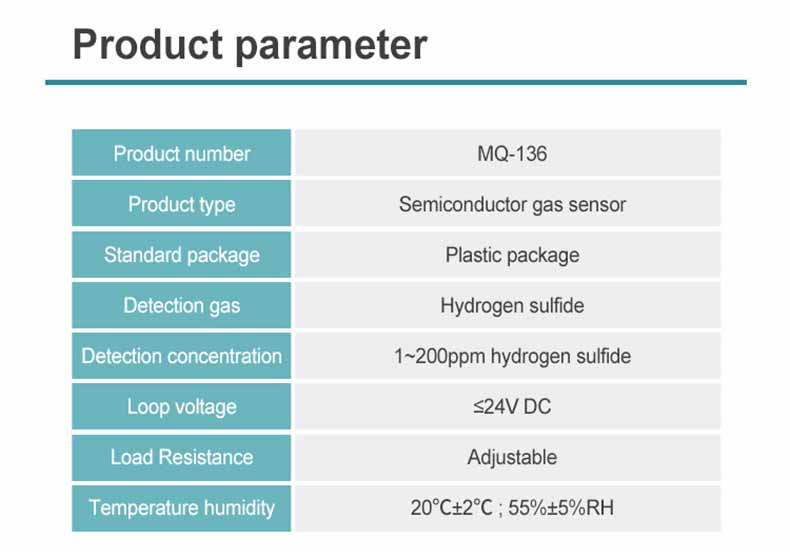Air pollution has become a critical issue in urban areas, posing significant threats to public health and the environment. To effectively address this problem, the development of gas sensor networks for real-time air pollution monitoring has gained considerable attention. This article aims to explore the importance and potential of gas sensor networks in monitoring air pollution, discuss the challenges involved, and provide insights into future directions.
Introduction:
With the rapid urbanization and industrialization, urban areas have experienced a dramatic increase in air pollution levels. Pollutants emitted from various sources, such as vehicles, factories, and power plants, have detrimental effects on both human health and the environment. Traditional air quality monitoring systems, which typically rely on a limited number of fixed monitoring stations, fail to capture the spatial and temporal dynamics of air pollution. Gas sensor networks offer a promising solution by providing real-time and high-resolution monitoring capabilities.
Gas Sensor Networks:
Gas sensor networks consist of a large number of distributed gas sensors strategically deployed across urban areas. These sensors detect and measure the concentration levels of different air pollutants, including nitrogen dioxide (NO2), sulfur dioxide (SO2), carbon monoxide (CO), ozone (O3), and particulate matter (PM). By collecting data from multiple sensors simultaneously, gas sensor networks can generate comprehensive and accurate air pollution maps in real-time.
Advantages of Gas Sensor Networks:
Gas sensor networks offer several advantages over traditional monitoring systems:
a. High Spatial Resolution: With a dense distribution of gas sensors, these networks provide detailed information on air pollution levels at various locations within urban areas. This spatial resolution enables pinpointing pollution hotspots and identifying pollution sources.
b. Real-Time Monitoring: Gas sensor networks continuously collect data from sensors and transmit it to a central server for analysis and visualization. This real-time monitoring allows for immediate responses to sudden changes or pollution events, facilitating timely interventions and mitigation actions.
c. Cost-Effectiveness: Compared to traditional monitoring stations, gas sensor networks are cost-effective due to the use of low-cost gas sensors and wireless communication technologies. Deploying a large number of sensors can cover a wider area at a lower cost.
d. Scalability: Gas sensor networks are highly scalable, as additional sensors can be easily deployed or existing sensors can be relocated to adapt to changing pollution patterns or expanding urban areas. This scalability provides flexibility and adaptability to long-term monitoring programs.
Challenges: Despite the advantages offered by gas sensor networks, several challenges need to be addressed for their effective implementation:
a. Sensor Calibration and Reliability: Gas sensors require regular calibration to ensure accuracy and reliability. Additionally, the performance of low-cost sensors may be affected by environmental factors such as temperature and humidity, leading to measurement errors.
b. Data Validation and Quality Assurance: Managing and validating large amounts of sensor data can be challenging. Quality control measures, data filtering techniques, and validation algorithms should be implemented to ensure the reliability and accuracy of air pollution data.
c. Network Design and Optimization: The optimal placement of sensors within urban areas is crucial to maximize coverage and minimize data redundancy. Advanced optimization algorithms can be employed to determine the best sensor deployment strategy.
d. Integration with Existing Monitoring Systems: Gas sensor networks should be integrated with existing air quality monitoring systems to complement their capabilities. This integration enables the combination of data from different sources, resulting in more comprehensive air pollution assessments.
Future Directions: To further enhance the effectiveness and impact of gas sensor networks, several future directions can be explored:
a. Sensor Technology Advancements: Continuous advancements in sensor technology, including improved sensitivity, selectivity, and stability, would enhance the reliability and accuracy of gas measurements.
b. Data Analytics and Machine Learning: The application of data analytics techniques, such as machine learning algorithms, can enable the interpretation and prediction of air pollution patterns. This would facilitate early detection of pollution events and the development of efficient mitigation strategies.
c. Citizen Engagement: Engaging citizens in air pollution monitoring can leverage their collective power to gather valuable data. Citizen science projects and mobile applications can be developed to involve the public in data collection and increase awareness of air pollution
 : +86 155 8830 2704
: +86 155 8830 2704 : jxdziot@gmail.com
: jxdziot@gmail.com
